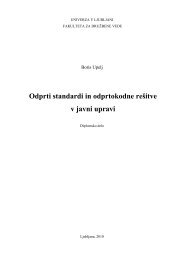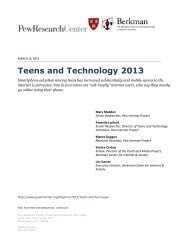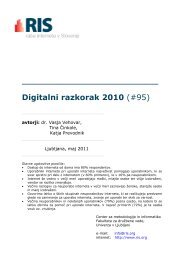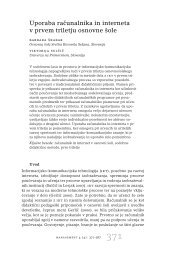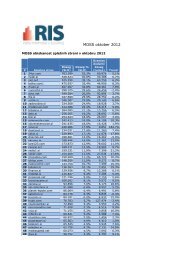the Labour Market Survey Report - Council of European ...
the Labour Market Survey Report - Council of European ...
the Labour Market Survey Report - Council of European ...
You also want an ePaper? Increase the reach of your titles
YUMPU automatically turns print PDFs into web optimized ePapers that Google loves.
Q1<br />
1995 Q3<br />
Q1<br />
1996 Q3<br />
Q1<br />
1997 Q3<br />
Q1<br />
1998 Q3<br />
Q1<br />
1998 Q3<br />
Q1<br />
2000 Q3<br />
Q1<br />
2001 Q3<br />
Q1<br />
2002 Q3<br />
Q1<br />
2003 Q3<br />
Q1<br />
2004 Q3<br />
Q1<br />
2005 Q3<br />
Highest Education Level <strong>of</strong> Computing Pr<strong>of</strong>essionals in Ireland:<br />
No meaningful data available from Eurostat<br />
Status <strong>of</strong> Computing Pr<strong>of</strong>essionals in Ireland one year before <strong>Survey</strong>:<br />
No meaningful data available from Eurostat<br />
Number <strong>of</strong> Computing Pr<strong>of</strong>essionals in Ireland who had received Training in Four Weeks fore <strong>Survey</strong>:<br />
No meaningful data available from Eurostat<br />
Possible Futures <strong>of</strong> IT Practitioner employment in Ireland<br />
As for Germany, Figure C-5 shows four scenarios for <strong>the</strong> development <strong>of</strong> <strong>the</strong> size <strong>of</strong> <strong>the</strong> IT Practitioner<br />
workforce in Ireland, based on <strong>the</strong> Eurostat totals for Computing Pr<strong>of</strong>essionals (ISCO 213) (Ireland<br />
has submitted no data for Computer Associate Pr<strong>of</strong>essionals (ISCO 312*)), based on assumptions<br />
<strong>of</strong> employment growth at 2% p.a., 5% p.a., 10% p.a. and 15% p.a., subject to an initial trough. The<br />
scenario model is described in Section 5.<br />
Again, Table C-1 shows, for <strong>the</strong> four scenarios given, <strong>the</strong> Total (net) new supply <strong>of</strong> skilled manpower<br />
that would be required to sustain that level <strong>of</strong> employment growth. It is recognized that <strong>the</strong> validity <strong>of</strong><br />
<strong>the</strong> assumptions – in particular about <strong>the</strong> shape <strong>of</strong> <strong>the</strong> initial “trough”, <strong>the</strong> “phasing” in relation to <strong>the</strong><br />
relevant national business cycle, and <strong>the</strong> level <strong>of</strong> replacement demand - would be refined as <strong>the</strong> first step<br />
in deeper review analysis at <strong>the</strong> national level.<br />
Figure C-5<br />
Recent development <strong>of</strong> Irish ITP workforce total and Forecast Scenarios<br />
(Source: Eurostat holdings <strong>of</strong> EU Member State <strong>Labour</strong> Force <strong>Survey</strong>s: data for ISCO 312)<br />
50,000<br />
ISCO 213<br />
Numbers in employment in each Category<br />
45,000<br />
40,000<br />
35,000<br />
30,000<br />
25,000<br />
20,000<br />
15,000<br />
10,000<br />
5,000<br />
0<br />
Scenario 1<br />
(2% p.a.)<br />
Scenario 2<br />
(5% p.a.)<br />
Scenario 3<br />
(10% p.a.)<br />
Scenario 4<br />
(15% p.a.)<br />
N.B. Most<br />
recent annual<br />
employment<br />
increase =<br />
11.2%<br />
Year/Quarter<br />
* because, as for <strong>the</strong> United Kingdom, <strong>the</strong> main national IT Practitioner category included workers both with and<br />
without degrees (see Annex A)<br />
122<br />
| C E P I S I.T. PRACTITIONER SKILLS IN EUROPE | Annex C



